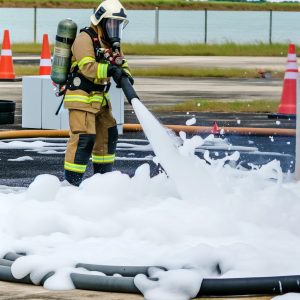Aqueous Film Forming Foam (AFFF) is a type of fire suppressant used to extinguish flammable liquid fires, including petrol, oil, and other types of hydrocarbon-based fires. It is called “aqueous film forming” because it forms a barrier—a film of water—over the surface of the flammable liquid, which helps to cool the fire and prevent the vapor release that feeds the flames.
What are the dangers with AFFF?
The dangers associated with AFFF revolve around its environmental and health impacts, due to the presence of PFAS. PFAS are a group of man-made chemicals that have been used in a variety of industrial and consumer products for their water-repellent, grease-repellent, and non-stick properties.
How does AFFF contaminant drinking water?
AFFF can contaminate drinking water through several pathways, primarily because of its use in firefighting and training exercises at airports, military bases, and industrial sites. Here’s how the PFAS from AFFF water contamination typically occurs:
PFAS in AFFF include a variety of fluorocarbon compounds, with perfluorooctanesulfonic acid (PFOS) and perfluorooctanoic acid (PFOA) being among the most studied and widely recognized.
Lawsuits related to AFFF primarily focus on the environmental contamination and health impacts associated with its use, particularly due to the presence of PFAS. These lawsuits can be categorized into several main groups:
Who makes AFFF?
AFFF is produced by several manufacturers around the world, with some of the most notable companies historically involved in its production including:
 Dallas Fort Worth Injury Lawyer Blog
Dallas Fort Worth Injury Lawyer Blog


